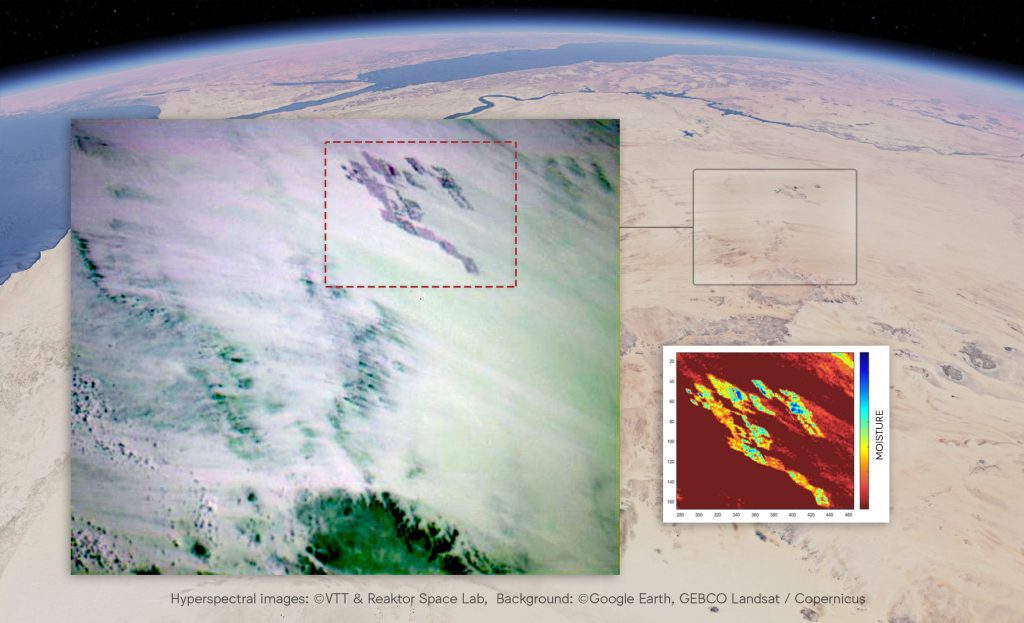Hyperspectral satellite technologies enable environmentally responsible decision-making

FINLAND (Kuva Space PR) — Humankind faces tough challenges: we need to improve food security and productivity while reducing the associated climate risks. This is possible with the right adaptations, but the Intergovernmental Panel on Climate Change (IPCC) highlights a gap between regional needs and actions taken – partly due to a lack of reliable information. Finnish space tech startup Kuva Space aims to bridge that gap with its constellation of satellites and Green DataⓇ platform so industries, governments and research institutions can make financially smarter and environmentally responsible decisions.
Kuva Space plans to build the world’s most extensive hyperspectral constellation of 100 nanosatellites to capture the molecular composition of materials at scale. The company will transform this intricate space-borne data into actionable insights that customers can access via an AI-driven data platform. The company will play a critical role in land and water management, monitoring carbon emissions and measurement of carbon sequestration, and have a noticable impact in the field of climate action.
“The commercial use of nanosatellites will prove a pivotal moment in our global fight against climate change”, says Jarkko Antila, CEO of Kuva Space. “We’re all aware that urgent action is needed. However, it can be difficult for markets, organisations and other stakeholders to know which actions have the most positive long-term impact. Hyperspectral technologies complement field testing with highly detailed and extensive insights from space. What’s more, they can unlock new applications that were previously unthinkable due to the cost of manual labour required. It’s not surprising the sector is seeing rapid growth, and we’re proud to say that Kuva Space is part of this growth journey.”
“We’ve completed three successful satellite missions and are on track to launch our first commercial hyperspectral satellite in early 2023,” explains Antila. “We’re committed to transforming how industries respond to the urgency of climate change with data that was previously out of reach. Via our Green Data platform, companies can soon take a spaceborne data-driven approach to decision-making to reduce their impact on the climate and safeguard their financial interests. It’s a win-win situation.”
Industry applications
Hyperspectral nanosatellite technology solutions open up opportunities for various industry verticals, including carbon sequestration and environmental, safety and security, insurance and finance, precision agriculture and aquaculture.
Carbon management will deliver economic benefits worth 26 trillion US dollars by 2030, with the carbon credit market alone worth more than 50 billion US dollars. Organisations can compensate for their residual CO2 emissions by buying carbon credits on Voluntary Carbon Markets (VCM) but reliable, verifiable and environmentally-robust data is currently lacking. Hyperspectral imaging from space will play a vital role in its development.
“For VCMs to thrive, we must help the market to develop beyond forestry to include other areas, such as agriculture where it’s currently very hard to measure changes in carbon emissions accurately,” adds Antila. “Spaceborne hyperspectral technologies enable the independent supervision of carbon sequestration across forests, oceans and agricultural sectors. More importantly, they will bring much-needed accountability, trust and pricing transparency to the entire market, fuelling its growth.”
“The team at Kuva Space has the knowledge, experience and ambition to build the largest hyperspectral nanosatellite constellation in a relatively short period. It’s exciting to see our market intelligence from space encouraging industries to take more action and implement climate-friendly policies while boosting our collective efforts to create a sustainable and prosperous future for all,” adds Inka Mero, Chairman of the Board at Kuva Space.

